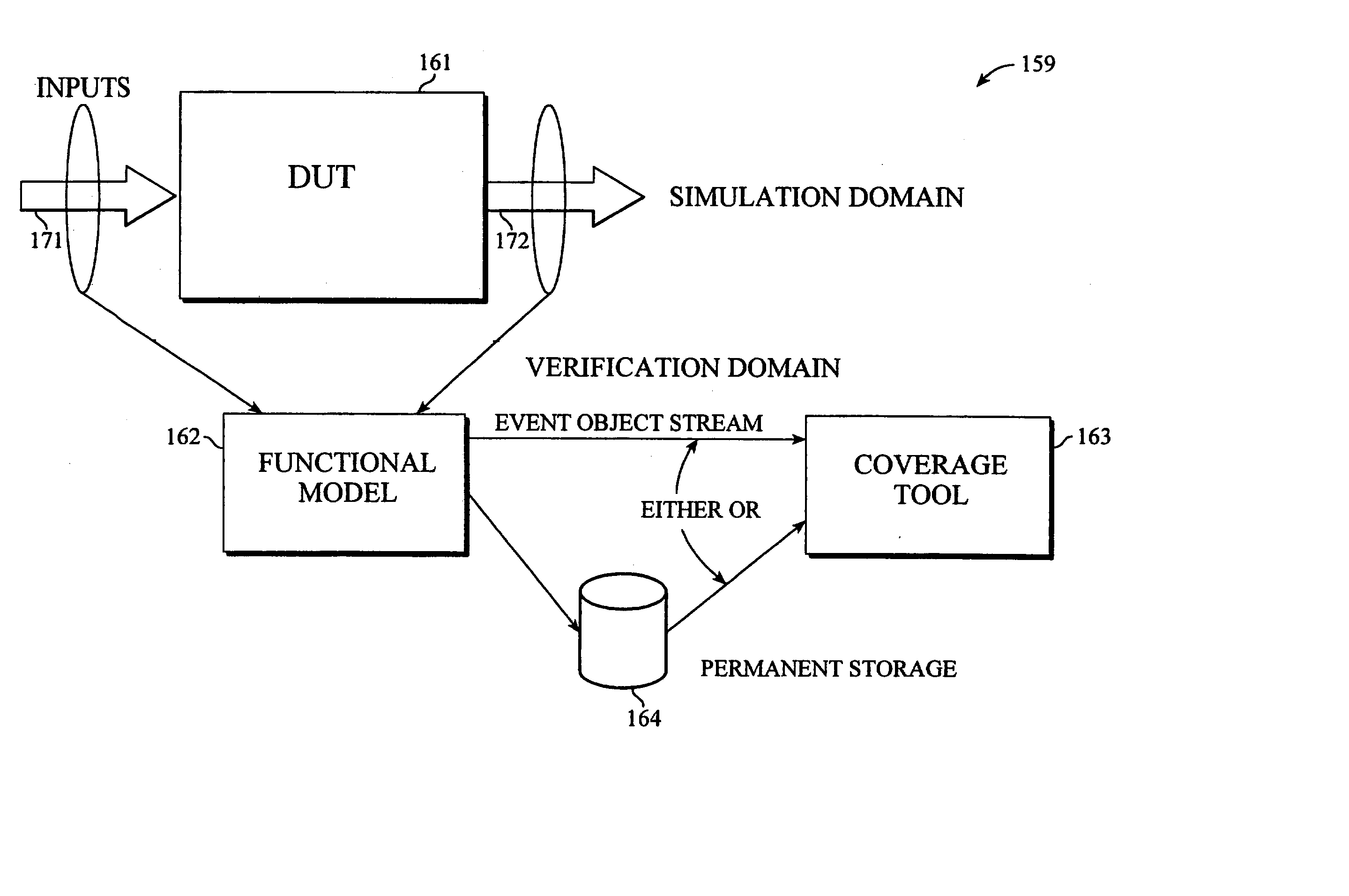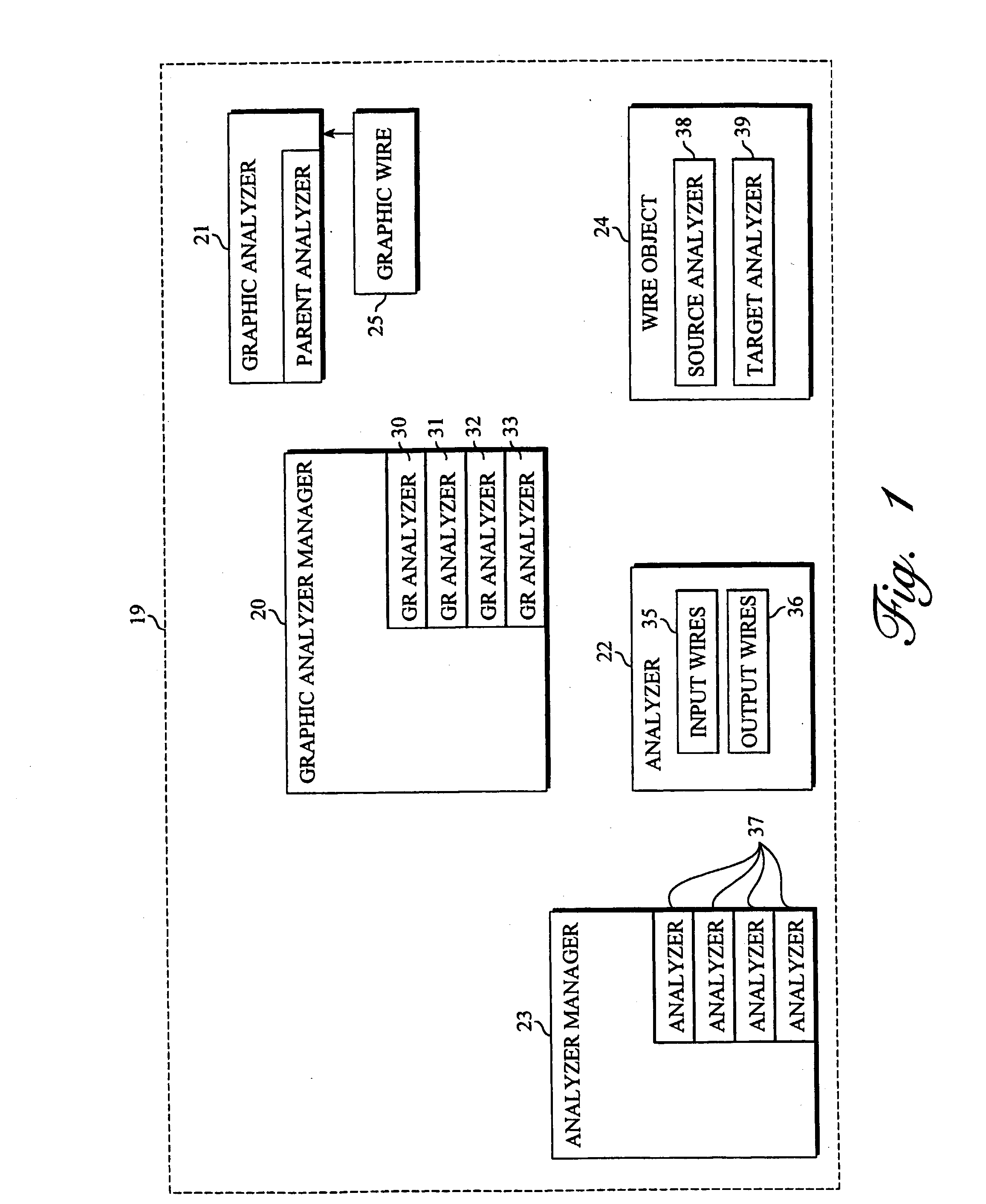Functional coverage analysis systems and methods for verification test suites
a functional coverage analysis and verification test technology, applied in the field of digital design methods and systems, can solve the problems of increasing the difficulty of gauging when verification should be considered to be completed, the occasion is non-intuitive and significantly time-consuming, and the functional tools are primitive and limited in many ways
- Summary
- Abstract
- Description
- Claims
- Application Information
AI Technical Summary
Problems solved by technology
Method used
Image
Examples
Embodiment Construction
[0019] Referring now to FIG. 1, there is shown a block diagram of the architecture of a generalized wiring system 19 for a data flow functional coverage tool, according to the present invention. The wiring system 19 is used in the graphical user interface 3 to implement a data flow functional coverage tool according to the present invention, which is conveniently capable of adaptation or modification according to the needs of the design test engineer. The wiring system 19 includes the following objects which are part of the architecture of the present invention. In particular, the wiring system 19 includes a graphic analyzer manager 20, a plurality of graphic analyzers 21, any number of analyzers 22, an analyzer manager 23, any number of wire objects 24, and any number of graphic wire objects 25. The graphic analyzer manager 23 includes a plurality of graphic analyzers 30-31. The graphic analyzer 21 includes a reference to a parent analyzer 34. The analyzer object 22 includes refere...
PUM
 Login to View More
Login to View More Abstract
Description
Claims
Application Information
 Login to View More
Login to View More - R&D
- Intellectual Property
- Life Sciences
- Materials
- Tech Scout
- Unparalleled Data Quality
- Higher Quality Content
- 60% Fewer Hallucinations
Browse by: Latest US Patents, China's latest patents, Technical Efficacy Thesaurus, Application Domain, Technology Topic, Popular Technical Reports.
© 2025 PatSnap. All rights reserved.Legal|Privacy policy|Modern Slavery Act Transparency Statement|Sitemap|About US| Contact US: help@patsnap.com



